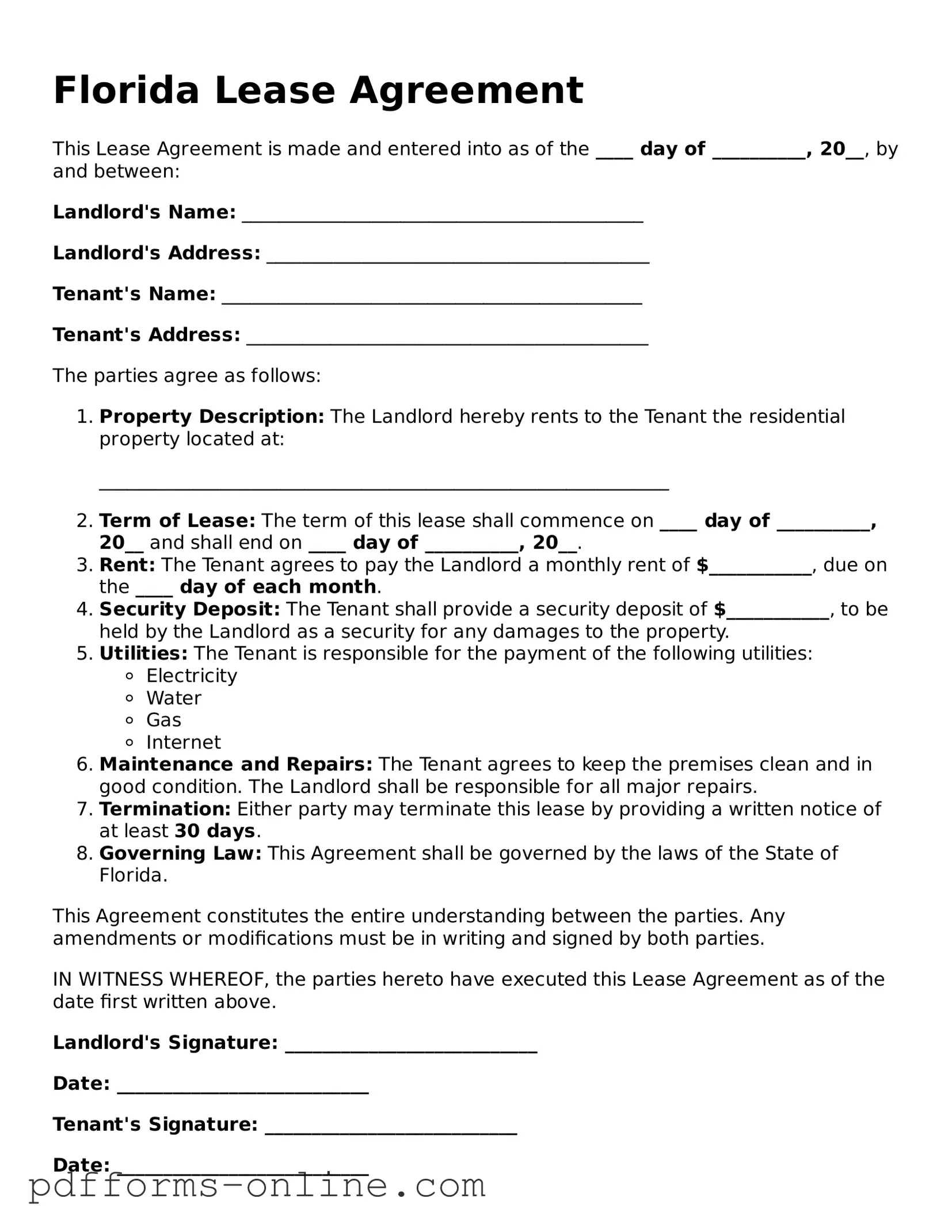Florida Lease Agreement
This Lease Agreement is made and entered into as of the ____ day of __________, 20__, by and between:
Landlord's Name: ___________________________________________
Landlord's Address: _________________________________________
Tenant's Name: _____________________________________________
Tenant's Address: ___________________________________________
The parties agree as follows:
- Property Description: The Landlord hereby rents to the Tenant the residential property located at:
_____________________________________________________________
- Term of Lease: The term of this lease shall commence on ____ day of __________, 20__ and shall end on ____ day of __________, 20__.
- Rent: The Tenant agrees to pay the Landlord a monthly rent of $___________, due on the ____ day of each month.
- Security Deposit: The Tenant shall provide a security deposit of $___________, to be held by the Landlord as a security for any damages to the property.
- Utilities: The Tenant is responsible for the payment of the following utilities:
- Electricity
- Water
- Gas
- Internet
- Maintenance and Repairs: The Tenant agrees to keep the premises clean and in good condition. The Landlord shall be responsible for all major repairs.
- Termination: Either party may terminate this lease by providing a written notice of at least 30 days.
- Governing Law: This Agreement shall be governed by the laws of the State of Florida.
This Agreement constitutes the entire understanding between the parties. Any amendments or modifications must be in writing and signed by both parties.
IN WITNESS WHEREOF, the parties hereto have executed this Lease Agreement as of the date first written above.
Landlord's Signature: ___________________________
Date: ___________________________
Tenant's Signature: ___________________________
Date: ___________________________
